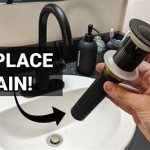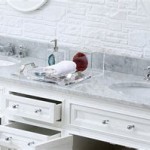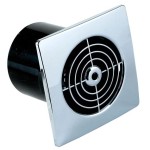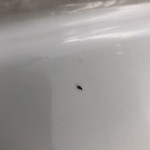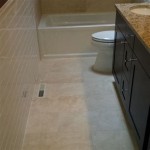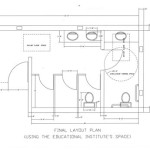The article should be optimized for readability.
How to Fit a Bathroom Vanity Sink Drain
Proper installation of a bathroom vanity sink drain is crucial for preventing leaks, ensuring proper drainage, and maintaining the integrity of the plumbing system. This process involves several steps, including understanding the components, preparing the sink and drain assembly, correctly aligning and tightening connections, and testing for leaks. This article provides a comprehensive guide on how to fit a bathroom vanity sink drain effectively.
Before commencing the installation, it is essential to gather the necessary tools and materials. These typically include:
- New sink drain assembly (including the drain flange, rubber or putty washers, mounting hardware, and tailpiece)
- Adjustable wrench
- Basin wrench (optional, for removing old drains)
- Plumber’s putty or silicone sealant
- Clean cloths or rags
- Bucket or container to catch water
- Gloves
- Safety glasses
Ensuring that all these items are readily available will streamline the installation process and minimize potential delays.
Key Point 1: Preparing the Sink and Drain Components
The initial stage of fitting a bathroom vanity sink drain involves preparing both the sink and the drain components. This step is essential for ensuring a secure and watertight seal.
First, thoroughly clean the area around the sink drain opening. Remove any old sealant, debris, or grime that may be present. A clean surface is crucial for the proper adhesion of the plumber's putty or silicone sealant. Use a scraper or putty knife to carefully remove any stubborn residue. Once the area is clean, wipe it dry with a clean cloth.
Next, disassemble the new drain assembly and identify all the individual components. These usually include the drain flange (the visible part that sits inside the sink), the rubber or putty washers, the mounting hardware (nuts and washers), and the tailpiece (the pipe that extends down from the drain). Familiarize oneself with the function of each component and how they fit together. This step is critical for ensuring proper assembly later on.
Examine the drain flange closely. Some drain flanges have a slightly beveled edge that should face down into the sink. Consult the manufacturer's instructions for the specific orientation. If using plumber’s putty, roll it into a rope-like shape, approximately ½ inch thick. Apply this rope of putty evenly around the underside of the drain flange. Ensure that the putty rope is continuous and covers the entire surface that will contact the sink. Alternatively, if using silicone sealant, apply a thin, even bead around the underside of the drain flange. Be careful not to apply too much sealant, as excess sealant can squeeze out and create a mess.
Carefully insert the drain flange into the sink drain opening, pressing down firmly to create a good seal with the putty or sealant. Ensure that the flange is centered and aligned correctly. Remove any excess putty or sealant that squeezes out from around the edge of the flange. Wipe it away with a clean cloth. This ensures a clean and professional-looking installation.
Key Point 2: Assembling and Tightening the Drain Assembly
With the drain flange properly prepared and inserted into the sink, the next step involves assembling and tightening the remaining drain assembly components from underneath the sink.
Working underneath the sink, slide the rubber or putty washer onto the tailpiece. The purpose of this washer is to create a watertight seal between the tailpiece and the bottom of the sink. Ensure that the washer is properly seated against the bottom of the sink. If the drain assembly includes multiple washers, consult the manufacturer's instructions to determine the correct order of installation.
Next, slide the mounting hardware (nuts and washers) onto the tailpiece. The specific configuration of the mounting hardware may vary depending on the drain assembly, but typically, there is a large nut that threads onto the tailpiece to secure it to the drain flange. Ensure that the washers are positioned correctly to distribute the pressure evenly.
Carefully thread the nut onto the tailpiece, tightening it by hand until it is snug. Then, use an adjustable wrench to further tighten the nut. Avoid overtightening, as this can damage the sink or the drain components. The goal is to achieve a secure and watertight seal without causing undue stress on the materials. Periodically check the alignment of the drain flange from above to ensure that it remains centered and aligned correctly.
Some drain assemblies include a pop-up drain stopper mechanism. If the drain assembly includes such a mechanism, install it according to the manufacturer's instructions. This typically involves inserting a rod or lever into the tailpiece and connecting it to the pop-up stopper in the drain flange. Ensure that the mechanism operates smoothly and that the stopper seals the drain effectively. The linkage connecting the lever to the stopper often requires adjustment to ensure proper functionality. Follow the manufacturer's recommendations for adjusting the linkage.
Once all the components are assembled and tightened, inspect the drain assembly for any signs of misalignment or gaps. If any problems are detected, loosen the nut and readjust the components as necessary. Achieving a perfect fit requires patience and attention to detail. Repeat the tightening process until the drain assembly is securely and properly installed.
Key Point 3: Connecting the Tailpiece and Testing for Leaks
After the drain assembly is securely fitted to the sink, the final step involves connecting the tailpiece to the P-trap and testing the installation for leaks. The P-trap is a U-shaped pipe that connects to the tailpiece and prevents sewer gases from entering the bathroom.
Ensure that the P-trap is properly aligned with the tailpiece. The tailpiece may need to be cut to the correct length to ensure a proper fit. Use a pipe cutter to cut the tailpiece to the desired length. Make sure the cut is clean and square. Any irregularities in the cut can interfere with the sealing process.
Connect the tailpiece to the P-trap using the appropriate fittings. These fittings typically include slip nuts and washers. Ensure that the washers are properly seated between the tailpiece and the P-trap. Tighten the slip nuts by hand until they are snug. Then, use an adjustable wrench to further tighten the nuts. Again, avoid overtightening, as this can damage the fittings or the pipes. The goal is to achieve a watertight seal without causing undue stress on the materials.
Once the tailpiece is connected to the P-trap, test the installation for leaks. Turn on the water faucet and let the water run for several minutes. Carefully inspect all the connections, including the drain flange, the tailpiece, the P-trap, and the slip nuts, for any signs of leaks. Use a flashlight to help illuminate the connections and make any leaks easier to spot.
If any leaks are detected, immediately turn off the water faucet. Tighten the affected connection slightly and retest for leaks. If tightening the connection does not stop the leak, disassemble the connection and inspect the washers and fittings for any damage or defects. Replace any damaged components and reassemble the connection. Retest for leaks again. It may be necessary to repeat this process several times to eliminate all leaks.
If plumber’s putty was used, allow it to cure completely before using the sink extensively. Silicone sealant typically requires 24 hours to fully cure. Consult the manufacturer's instructions for the specific curing time requirements. After the putty or sealant has cured, retest the installation for leaks to ensure that the seal remains watertight. Thorough testing is vital to prevent water damage.
Proper installation of a bathroom vanity sink drain requires careful preparation, precise assembly, and thorough testing. By following these steps, one can successfully install a sink drain that is both leak-free and functional, ensuring the longevity and efficiency of the bathroom plumbing system. Always refer to the manufacturer's instructions for the specific drain assembly being installed, as variations may exist between different models. If unsure about any aspect of the installation, consult a qualified plumber.

Bathroom Sink Plumbing Installation Diy Montreal

How To Fit A Bathroom Sink Diy Guides Victorian Plumbing

How To Install A Pipe From Sink Drain Wall Ehow

How To Easily Connect The Plumbing For A New Bathroom Sink Hometips

How To Replace A Rusty Sink Drain Howtolou Com

How To Cut And Modify Vanity Drawers For Plumbing Easy Diy Steps Abbotts At Home

Bathroom Renovation Update How To Install An Hemnes Sink Sweet Pea

Bathroom Sink Plumbing Installation Diy Montreal

How To Install A Bathroom Vanity

Plumbing New Vanity Sink Won T Drain Completely Home Improvement Stack Exchange
Related Posts
